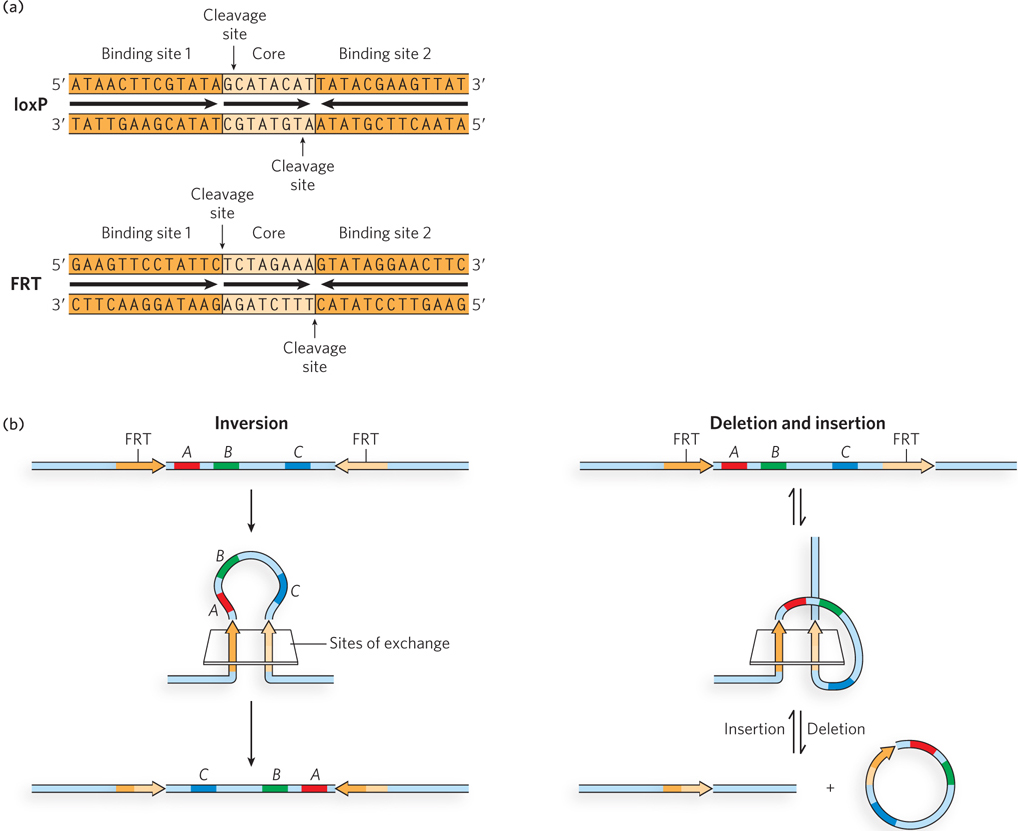
The structure and activity of site- specific recombination sites. (a) Shown here are both strands of the recombination sites from two well- studied recombination systems widely used in biotechnology, lox (loxP) and FRT; the inverted 13 bp repeats are binding sites for the recombinases, named Cre and Flp, respectively. (These two recombination sites and their recombinases are discussed later in the chapter.) The inverted repeats are separated by an asymmetric core sequence. The cleavage and exchange events described in Figure 14- 3 occur at or near the ends of the core sequence. (b) The colored ribbons here represent double- stranded DNA. Two recombination sites flank a length of DNA to be recombined. A, B, and C are imaginary genes or genetic markers in the DNA separating the two FRT sites. Each orange arrow represents a complete FRT site, as illustrated in (a). Orientation (shown by the arrowheads) refers to the asymmetric nucleotide sequence in these recombination sites, not the 5′→3′ direction. Recombination can lead to inversion (left) or deletion and, in the reverse process, insertion (right).